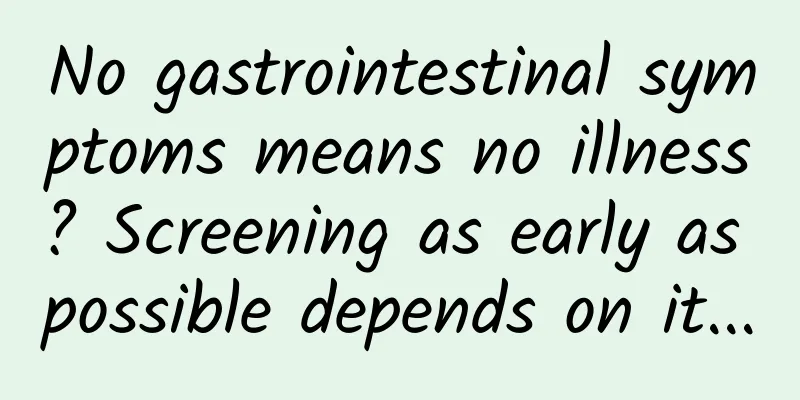No gastrointestinal symptoms means no illness? Screening as early as possible depends on it...

|
Last week, Ms. Gong (pseudonym) said this after undergoing a painless gastroscopy in the endoscopy room of our hospital. Examination items: painless gastroenteroscopy, conventional gastroenteroscopy, etc. Health Science 1 No symptoms means no illness? Not necessarily! Many people have misunderstandings about gastrointestinal diseases, thinking that if there are no symptoms, then there is nothing to worry about. In fact, early digestive tract tumors often have no obvious symptoms , and this "asymptomatic" performance is precisely a major feature of early digestive tract tumors. We should not ignore the examination just because there are no symptoms. Especially for people at high risk of gastric cancer and colorectal cancer, screening should be carried out as soon as possible after reaching a certain age. 2 How to detect gastrointestinal diseases early? Gastroenteroscopy is the best choice. It is an intuitive and visual examination method. In addition to helping us diagnose gastrointestinal diseases such as gastric ulcers, gastric polyps, and inflammatory bowel disease, it can also screen for early gastrointestinal tumors and detect precancerous lesions such as atrophic gastritis and intestinal polyps. At the same time, a pathological biopsy can be taken through gastroenteroscopy to confirm the diagnosis; and treatment operations such as polypectomy and early cancer resection can be performed. 3 Who are the high-risk groups for gastrointestinal tumors? Those who meet any of the following items (1) and (2)-(6) should be classified as a high-risk group for gastrointestinal tumors: (1) Aged 40 or above. (2) Those from areas with a high incidence of gastrointestinal tumors. (3) Gastrointestinal symptoms (abdominal distension, abdominal pain, nausea, vomiting, dysphagia, black stools, bloody stools, etc.). (4) Family history of gastrointestinal tumors. (5) Patients with precancerous diseases or precancerous lesions of the digestive tract (esophageal leukoplakia, chronic atrophic gastritis, chronic gastric ulcer, multiple adenomatous polyps of the colon, intraepithelial neoplasia, etc.). (6) Having other high-risk factors for gastrointestinal cancer (smoking, heavy drinking, head and neck or respiratory tract squamous cell carcinoma, long-term consumption of high-salt and pickled foods, etc.). |
<<: Characteristics of oral ulcers and their prevention and treatment
>>: Children's eyes itch in spring, beware of allergic conjunctivitis
Recommend
Is garlic sprout acidic or alkaline? How to make pickled garlic sprouts delicious
Almost all vegetables, especially green leafy vege...
How to maintain health during the Jingzhe period? What is the saying about eating pears during the Jingzhe period?
Jingzhe is a solar term in spring. After Jingzhe,...
What causes women's sleepiness?
In fact, in life, many women will find a phenomen...
Can I take a shower after sex if I want to get pregnant?
The production of sperm and egg fusion is the fus...
Dark discharge that doesn't look like menstruation
Women's menstrual period is relatively regula...
A woman dreams of someone else cutting her hair
In our daily life, dreaming is a very common thin...
What are the benefits of drinking pomegranate juice? How to squeeze pomegranate juice
Autumn and winter are good seasons for eating pom...
Alcohol cotton plugs for ears during menstruation
Menstrual pain can be said to be a major problem ...
Can I eat fruits during menstruation? What fruits can I eat?
Although there are many types of fruits, each fru...
How common is lung cancer? A complete analysis of global and Chinese incidence data
Author: Gao Xuehan Peking Union Medical College H...
At 30, your husband is most afraid that you will lose this thing
Low libido is one of the common sexual dysfunctio...
Why do I have diarrhea during my period?
Menstruation is a body metabolism that every adul...
Is it harmful to run during menstruation?
According to traditional cognition, there are man...
Do you have leucorrhea during menstruation?
Women's issues are actually problems that bot...
What medicine should I use for postpartum relaxation?
Women all know that there are many reasons for va...









